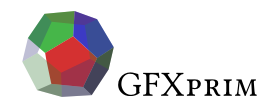// SPDX-License-Identifier: GPL-2.1-or-later /* * Copyright (C) 2009-2013 Cyril Hrubis <metan@ucw.cz> */ /* Gaussian additive noise example. */ #include <stdio.h> #include <unistd.h> #include <string.h> #include <errno.h> #include <gfxprim.h> static void help(const char *app) { printf("usage: %s -s float -m float input.img output.img\n\n", app); printf(" -s [0,1] sigma in pixels\n"); printf(" -m [0,1] mu in pixels\n"); } int main(int argc, char *argv[]) { gp_pixmap *img; float sigma = 0.1, mu = 0.1; int opt; while ((opt = getopt(argc, argv, "s:m:")) != -1) { switch (opt) { case 's': sigma = atof(optarg); break; case 'm': mu = atof(optarg); break; default: help(argv[0]); return 1; } } if (argc - optind != 2) { help(argv[0]); return 1; } img = gp_load_image(argv[optind], NULL); if (img == NULL) { fprintf(stderr, "Failed to load image '%s': %s\n", argv[optind], strerror(errno)); return 1; } gp_pixmap *res = gp_filter_gaussian_noise_add_alloc(img, sigma, mu, NULL); if (gp_save_image(res, argv[optind + 1], NULL)) { fprintf(stderr, "Failed to save image '%s': %s", argv[optind + 1], strerror(errno)); return 1; } return 0; }

Gaussian Additive Noise Filter
Simple program that adds a gaussian distributed noise to the image.